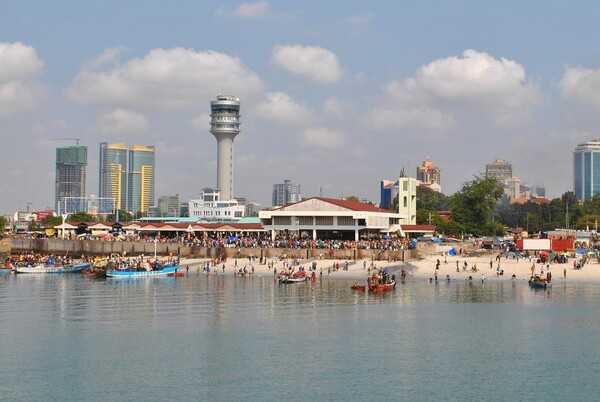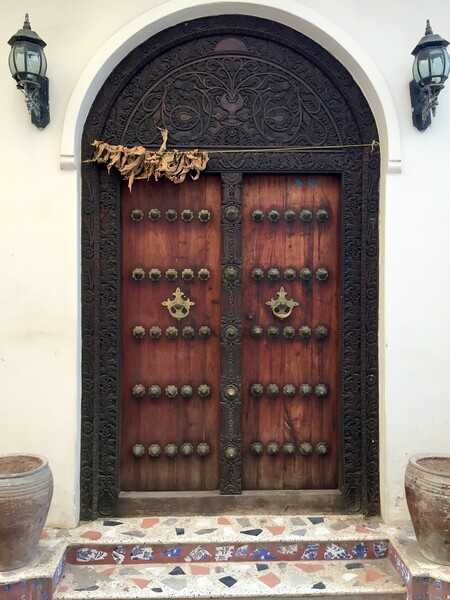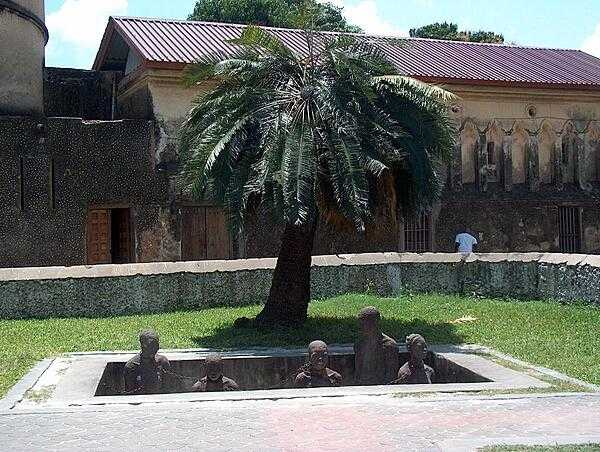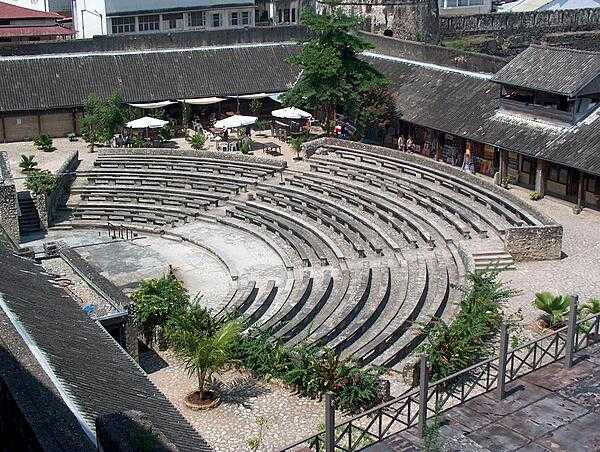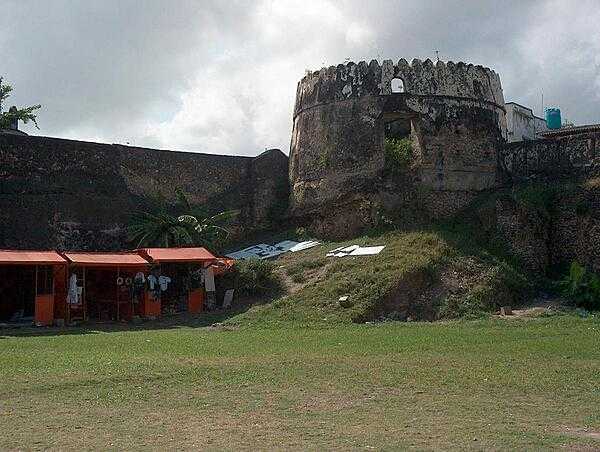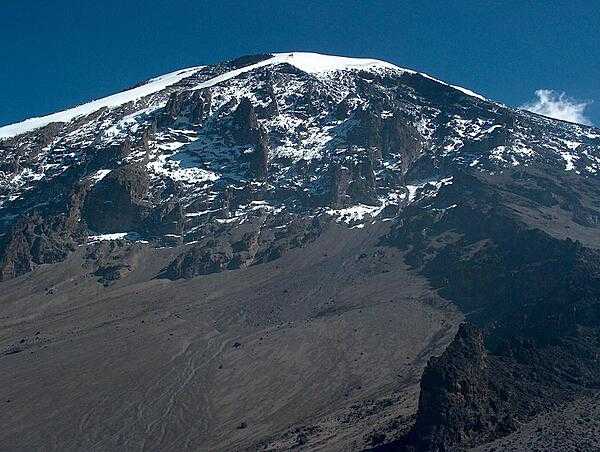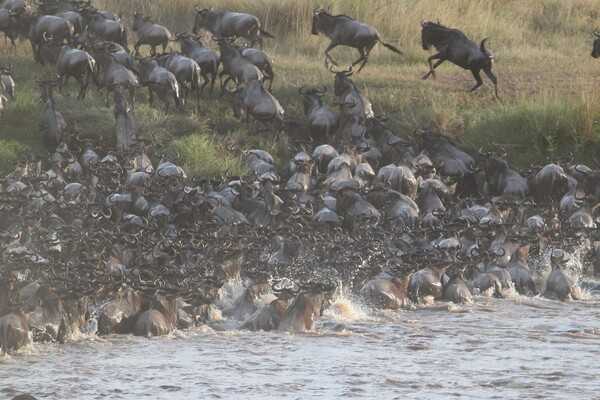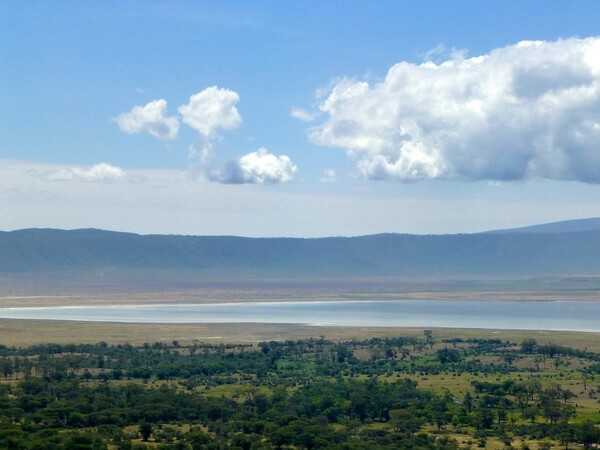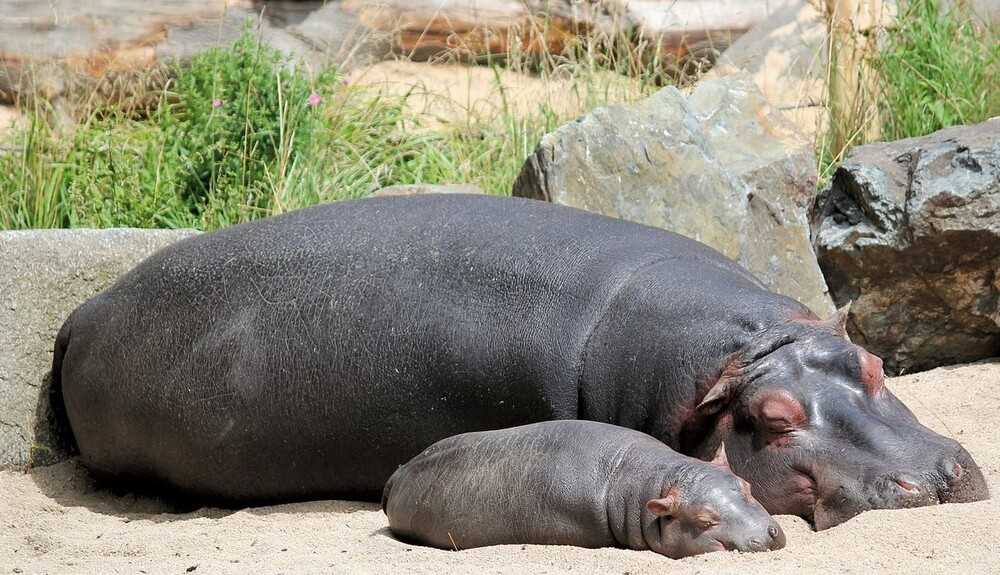Tanzania - TZ - TZA - TAN - Africa
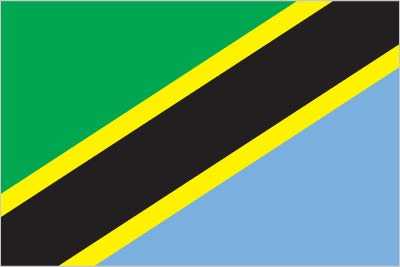

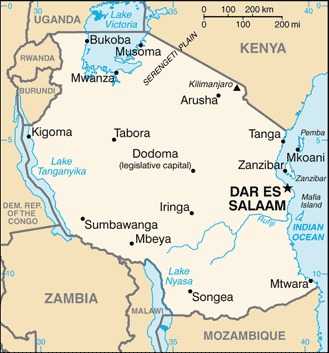
Tanzania Images
Tanzania Factbook Data
Diplomatic representation from the US
embassy: 686 Old Bagamoyo Road, Msasani, P.O. Box 9123, Dar es Salaam
mailing address: 2140 Dar es Salaam Place, Washington, DC 20521-2140
telephone: [255] (22) 229-4000
FAX: [255] (22) 229-4721
email address and website:
DRSACS@state.gov
https://tz.usembassy.gov/
Age structure
15-64 years: 55.4% (male 18,677,388/female 18,708,390)
65 years and over: 3.4% (2024 est.) (male 975,224/female 1,321,388)
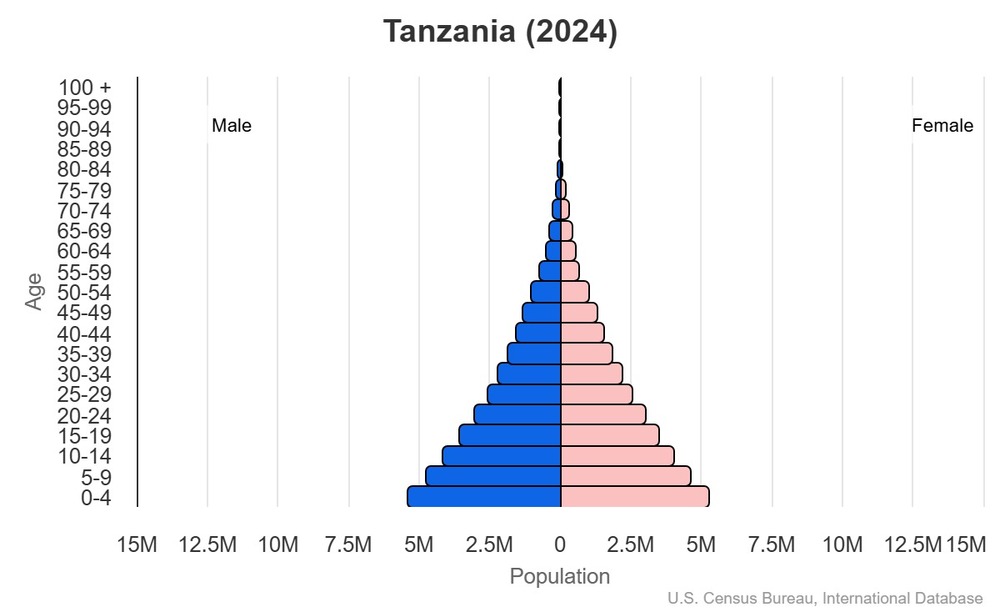
For additional information, please see the entry for Population pyramid on the Definitions and Notes page.
Geographic coordinates
Sex ratio
0-14 years: 1.02 male(s)/female
15-64 years: 1 male(s)/female
65 years and over: 0.74 male(s)/female
total population: 1 male(s)/female (2024 est.)
Natural hazards
volcanism: limited volcanic activity; Ol Doinyo Lengai (2,962 m) has emitted lava in recent years; other historically active volcanoes include Kieyo and Meru
Area - comparative
Background
Tanzania contains some of Africa’s most iconic national parks and famous paleoanthropological sites, and its diverse cultural heritage reflects the multiple ethnolinguistic groups that live in the country. Its long history of integration into trade networks spanning the Indian Ocean and the African interior led to the development of Swahili as a common language in much of east Africa and the introduction of Islam into the region. A number of independent coastal and island trading posts in what is now Tanzania came under Portuguese control after 1498 when they began to take control of much of the coast and Indian Ocean trade. By 1700, the Sultanate of Oman had become the dominant power in the region after ousting the Portuguese, who were also facing a series of local uprisings. During the next hundred years, Zanzibar -- an archipelago off the coast that is now part of Tanzania -- became a hub of Indian Ocean trade, with Arab and Indian traders establishing and consolidating trade routes with communities in mainland Tanzania that contributed to the expansion of the slave trade. Zanzibar briefly became the capital of the Sultanate of Oman before it split into separate Omani and Zanzibar Sultanates in 1856. Beginning in the mid-1800s, European explorers, traders, and Christian missionaries became more active in the region. The Germans eventually established control over mainland Tanzania -- which they called Tanganyika -- and the British established control over Zanzibar. Tanganyika came under British administration after the German defeat in World War I.
Tanganyika gained independence from Great Britain in 1961, and Zanzibar followed in 1963 as a constitutional monarchy. In Tanganyika, Julius NYERERE, a charismatic and idealistic socialist, established a one-party political system that centralized power and encouraged national self-reliance and rural development. In 1964, a popular uprising overthrew the Sultan in Zanzibar and either killed or expelled many of the Arabs and Indians who had dominated the isles for more than 200 years. Later that year, Tanganyika and Zanzibar combined to form the United Republic of Tanzania, but Zanzibar retained considerable autonomy. Their two ruling parties combined to form the Chama Cha Mapinduzi (CCM) party in 1977, which has since won every presidential election. Tanzania held its first multi-party elections in 1995, but CCM candidates have continued to dominate politics. The ruling party has claimed victory in four contentious elections since 1995, despite international observers' claims of voting irregularities. In 2001, 35 people died in Zanzibar when soldiers fired on protestors. John MAGUFULI won the 2015 and 2020 presidential elections, and the CCM won over two-thirds of the seats in Parliament in both elections. MAGUFULI died in 2021 while in office and was succeeded by his vice president, Samia Suluhu HASSAN.
Environmental issues
International environmental agreements
signed, but not ratified: none of the selected agreements
Population below poverty line
note: % of population with income below national poverty line
Household income or consumption by percentage share
highest 10%: 33.1% (2018 est.)
note: % share of income accruing to lowest and highest 10% of population
Exports - commodities
note: top five export commodities based on value in dollars
Exports - partners
note: top five export partners based on percentage share of exports
Administrative divisions
Agricultural products
note: top ten agricultural products based on tonnage
Military and security forces
Ministry of Home Affairs: Tanzania Police Force (Jeshi la Polisi Tanzania) (2025)
note 1: the Nation Building Army (aka National Services) is a paramilitary organization under the Defense Forces that provides six months of military and vocational training to individuals as part of their two years of public service; after completion of training, some graduates join the regular Defense Forces while the remainder become part of the Reserves
note 2: the Tanzania Police Force includes the Police Field Force (aka Field Force Unit), a special police division with the responsibility for controlling unlawful demonstrations and riots
Budget
expenditures: $13.583 billion (2024 est.)
note: central government revenues and expenses (excluding grants/extrabudgetary units/social security funds) converted to US dollars at average official exchange rate for year indicated
Capital
geographic coordinates: 6 48 S, 39 17 E
time difference: UTC+3 (8 hours ahead of Washington, DC, during Standard Time)
etymology: the name comes from the name of a nearby mountain; the origin of the mountain's name is unclear
Imports - commodities
note: top five import commodities based on value in dollars
Climate
Coastline
Constitution
amendment process: proposed by the National Assembly; passage of amendments to constitutional articles including those on sovereignty of the United Republic, the authorities and powers of the government, the president, the Assembly, and the High Court requires two-thirds majority vote of the mainland Assembly membership and of the Zanzibar House of Representatives membership; House of Representatives approval of other amendments is not required
Exchange rates
Exchange rates:
2,597.9 (2024 est.)
2,383.043 (2023 est.)
2,303.034 (2022 est.)
2,297.764 (2021 est.)
2,294.146 (2020 est.)
Executive branch
head of government: President Samia Suluhu HASSAN (since 19 March 2021)
cabinet: Cabinet appointed by the president from among members of the National Assembly
election/appointment process: president and vice president directly elected on the same ballot by simple majority popular vote for a 5-year term (eligible for a second term); prime minister appointed by the president
most recent election date: 28 October 2020
election results:
2020: John MAGUFULI reelected president; percent of vote - John MAGUFULI (CCM) 84.4%, Tundu LISSU (CHADEMA) 13%, other 2.6%
2015: John MAGUFULI elected president; percent of vote - John MAGUFULI (CCM) 58.5%, Edward LOWASSA (CHADEMA) 40%, other 1.5%
expected date of next election: October 2025
note 1: Zanzibar elects a president as head of government for internal matters; election held on 28 October 2020; Hussein MWINYI (CCM) 76.3%, Maalim Seif SHARIF (ACT-Wazalendo) 19.9%, other 3.8%
note 2: the president is both chief of state and head of government
note 3: after the death of President John MAGUFULI in March 2021, Vice President Samia Suluhu HASSAN assumed the presidency
Flag
meaning: colors come from the flags of Tanganyika and Zanzibar; green stands for natural vegetation, gold for rich mineral deposits, black for the Swahili people, and blue for lakes and rivers, as well as the Indian Ocean
Independence
Industries
Judicial branch
judge selection and term of office: Court of Appeal and High Court justices appointed by the national president after consultation with the Judicial Service Commission for Tanzania, a judicial body of high-level judges and 2 members appointed by the national president; Court of Appeal and High Court judges serve until mandatory retirement at age 60, but terms can be extended; High Court of Zanzibar judges appointed by the national president after consultation with the Judicial Commission of Zanzibar; judges can serve until mandatory retirement at age 65
subordinate courts: Resident Magistrates Courts; Kadhi courts (for Islamic family matters); district and primary courts
Land boundaries
border countries (8): Burundi 589 km; Democratic Republic of the Congo 479 km; Kenya 775 km; Malawi 512 km; Mozambique 840 km; Rwanda 222 km; Uganda 391 km; Zambia 353 km
Legal system
Literacy
male: 83% (2015 est.)
female: 73% (2015 est.)
Maritime claims
exclusive economic zone: 200 nm
International organization participation
National holiday
Nationality
adjective: Tanzanian
Natural resources
Geography - note
Economic overview
Political parties
Civic United Front (Chama Cha Wananchi) or CUF
Party of Democracy and Development (Chama Cha Demokrasia na Maendeleo) or CHADEMA
Revolutionary Party of Tanzania (Chama Cha Mapinduzi) or CCM
Railways
standard gauge: 421 km (2022)
narrow gauge: 969 km (2022) 1.067 m gauge
broad gauge: 2,707 km (2022) 1.000 m guage
Suffrage
Terrain
Government type
Country name
conventional short form: Tanzania
local long form: Jamhuri ya Muungano wa Tanzania
local short form: Tanzania
former: German East Africa, Trust Territory of Tanganyika, Republic of Tanganyika, People's Republic of Zanzibar, United Republic of Tanganyika and Zanzibar
etymology: the country's name is a combination of the first letters of Tanganyika and Zanzibar, the two states that merged to form Tanzania in 1964
Location
Map references
Irrigated land
Diplomatic representation in the US
chancery: 1232 22nd Street NW, Washington, DC 20037
telephone: [1] (202) 884-1080
FAX: [1] (202) 797-7408
email address and website:
ubalozi@tanzaniaembassy-us.org
https://us.tzembassy.go.tz/
Internet users
Internet country code
Refugees and internally displaced persons
IDPs: 75,117 (2024 est.)
GDP (official exchange rate)
note: data in current dollars at official exchange rate
Total renewable water resources
School life expectancy (primary to tertiary education)
male: 9 years (2021 est.)
female: 9 years (2021 est.)
Urbanization
rate of urbanization: 4.89% annual rate of change (2020-25 est.)
Broadcast media
Drinking water source
urban: 81.1% of population (2022 est.)
rural: 49% of population (2022 est.)
total: 60.8% of population (2022 est.)
unimproved:
urban: 18.9% of population (2022 est.)
rural: 51% of population (2022 est.)
total: 39.2% of population (2022 est.)
National anthem(s)
lyrics/music: collective/Enoch Mankayi SONTONGA
history: adopted 1961; the anthem, which is also a popular African popular song in Africa, shares the melody of Zambia's anthem and is part of South Africa's anthem
Major urban areas - population
International law organization participation
Physician density
Hospital bed density
National symbol(s)
Mother's mean age at first birth
note: data represents median age at first birth among women 15-49
GDP - composition, by end use
government consumption: 9.2% (2024 est.)
investment in fixed capital: 41.4% (2024 est.)
investment in inventories: -1.6% (2024 est.)
exports of goods and services: 19.8% (2024 est.)
imports of goods and services: -21.7% (2024 est.)
note: figures may not total 100% due to rounding or gaps in data collection
Dependency ratios
youth dependency ratio: 76.8 (2024 est.)
elderly dependency ratio: 5.7 (2024 est.)
potential support ratio: 17.5 (2024 est.)
Citizenship
citizenship by descent only: at least one parent must be a citizen of Tanzania; if a child is born abroad, the father must be a citizen of Tanzania
dual citizenship recognized: no
residency requirement for naturalization: 5 years
Population distribution
Electricity access
electrification - urban areas: 74.7%
electrification - rural areas: 36%
Civil aircraft registration country code prefix
Sanitation facility access
urban: 89.6% of population (2022 est.)
rural: 27.2% of population (2022 est.)
total: 50.1% of population (2022 est.)
unimproved:
urban: 10.4% of population (2022 est.)
rural: 72.8% of population (2022 est.)
total: 49.9% of population (2022 est.)
Ethnic groups
Religions
note: Zanzibar is almost entirely Muslim
Languages
major-language sample(s):
The World Factbook, Chanzo cha Lazima Kuhusu Habari ya Msingi. (Kiswahili)
The World Factbook, the indispensable source for basic information.
Imports - partners
note: top five import partners based on percentage share of imports
Elevation
lowest point: Indian Ocean 0 m
mean elevation: 1,018 m
Health expenditure
5.1% of national budget (2022 est.)
Military and security service personnel strengths
Military deployments
Military - note
Terrorist group(s)
note: details about the history, aims, leadership, organization, areas of operation, tactics, targets, weapons, size, and sources of support of the group(s) appear(s) in the Terrorism reference guide
Total water withdrawal
industrial: 25 million cubic meters (2022 est.)
agricultural: 4.632 billion cubic meters (2022 est.)
Waste and recycling
percent of municipal solid waste recycled: 12.3% (2022 est.)
Average household expenditures
on alcohol and tobacco: 1.3% of household expenditures (2023 est.)
Major watersheds (area sq km)
Indian Ocean drainage: Zambezi (1,332,412 sq km)
Major lakes (area sq km)
salt water lake(s): Lake Rukwa - 5,760 sq km
Major rivers (by length in km)
note: [s] after country name indicates river source; [m] after country name indicates river mouth
National heritage
selected World Heritage Site locales: Ngorongoro Conservation Area (m); Ruins of Kilwa Kisiwani and Songo Mnara (c); Serengeti National Park (n); Selous Game Reserve (n); Kilimanjaro National Park (n); Stone Town of Zanzibar (c); Kondoa Rock-Art Sites (c)
Child marriage
women married by age 18: 29.1% (2022)
men married by age 18: 3.5% (2022)
Coal
consumption: 740,000 metric tons (2023 est.)
exports: 1.602 million metric tons (2023 est.)
imports: 21 metric tons (2023 est.)
proven reserves: 1.41 billion metric tons (2023 est.)
Electricity generation sources
solar: 0.3% of total installed capacity (2023 est.)
hydroelectricity: 24.6% of total installed capacity (2023 est.)
biomass and waste: 0.7% of total installed capacity (2023 est.)
Natural gas
consumption: 2.016 billion cubic meters (2023 est.)
proven reserves: 6.513 billion cubic meters (2021 est.)
Petroleum
Gross reproduction rate
Currently married women (ages 15-49)
Remittances
0.9% of GDP (2022 est.)
0.8% of GDP (2021 est.)
note: personal transfers and compensation between resident and non-resident individuals/households/entities
Geoparks
global geoparks and regional networks: Ngorongoro Lengai (2023)
Ports
large: 0
medium: 1
small: 3
very small: 4
ports with oil terminals: 4
key ports: Chake Chake, Dar Es Salaam, Tanga, Zanzibar
National color(s)
Particulate matter emissions
Methane emissions
agriculture: 1,176.8 kt (2019-2021 est.)
waste: 168.3 kt (2019-2021 est.)
other: 1,226.8 kt (2019-2021 est.)
Labor force
note: number of people ages 15 or older who are employed or seeking work
Youth unemployment rate (ages 15-24)
male: 2.6% (2024 est.)
female: 4.2% (2024 est.)
note: % of labor force ages 15-24 seeking employment
Net migration rate
Median age
male: 18.8 years
female: 19.4 years
Debt - external
note: present value of external debt in current US dollars
Maternal mortality ratio
Reserves of foreign exchange and gold
$5.888 billion (2017 est.)
$4.351 billion (2016 est.)
note: holdings of gold (year-end prices)/foreign exchange/special drawing rights in current dollars
Total fertility rate
Unemployment rate
2.6% (2023 est.)
2.6% (2022 est.)
note: % of labor force seeking employment
Population
male: 33,691,904
female: 33,770,217
Carbon dioxide emissions
from coal and metallurgical coke: 1.687 million metric tonnes of CO2 (2023 est.)
from petroleum and other liquids: 12.066 million metric tonnes of CO2 (2023 est.)
from consumed natural gas: 3.954 million metric tonnes of CO2 (2023 est.)
Area
land: 885,800 sq km
water: 61,500 sq km
note: includes the islands of Mafia, Pemba, and Zanzibar
Taxes and other revenues
note: central government tax revenue as a % of GDP
Real GDP (purchasing power parity)
$233.786 billion (2023 est.)
$222.506 billion (2022 est.)
note: data in 2021 dollars
Airports
Infant mortality rate
male: 32.3 deaths/1,000 live births
female: 26.9 deaths/1,000 live births
Telephones - mobile cellular
subscriptions per 100 inhabitants: 92 (2022 est.)
Gini Index coefficient - distribution of family income
note: index (0-100) of income distribution; higher values represent greater inequality
Inflation rate (consumer prices)
3.8% (2023 est.)
4.4% (2022 est.)
note: annual % change based on consumer prices
Current account balance
-$5.482 billion (2022 est.)
-$2.374 billion (2021 est.)
note: balance of payments - net trade and primary/secondary income in current dollars
Real GDP per capita
$3,600 (2023 est.)
$3,500 (2022 est.)
note: data in 2021 dollars
Broadband - fixed subscriptions
subscriptions per 100 inhabitants: 2 (2023 est.)
Tobacco use
male: 11.3% (2025 est.)
female: 2% (2025 est.)
Obesity - adult prevalence rate
Energy consumption per capita
Death rate
Birth rate
Electricity
consumption: 9.109 billion kWh (2023 est.)
imports: 157.688 million kWh (2023 est.)
transmission/distribution losses: 2.039 billion kWh (2023 est.)
Merchant marine
by type: bulk carrier 4, container ship 17, general cargo 170, oil tanker 58, other 132
Children under the age of 5 years underweight
Imports
$16.674 billion (2022 est.)
$11.61 billion (2021 est.)
note: balance of payments - imports of goods and services in current dollars
Exports
$11.986 billion (2022 est.)
$9.874 billion (2021 est.)
note: balance of payments - exports of goods and services in current dollars
Telephones - fixed lines
subscriptions per 100 inhabitants: (2023 est.) less than 1
Alcohol consumption per capita
beer: 0.74 liters of pure alcohol (2019 est.)
wine: 0.09 liters of pure alcohol (2019 est.)
spirits: 0.38 liters of pure alcohol (2019 est.)
other alcohols: 6.6 liters of pure alcohol (2019 est.)
Life expectancy at birth
male: 69 years
female: 72.6 years
Real GDP growth rate
5.1% (2023 est.)
4.6% (2022 est.)
note: annual GDP % growth based on constant local currency
Industrial production growth rate
note: annual % change in industrial value added based on constant local currency
GDP - composition, by sector of origin
industry: 28.7% (2024 est.)
services: 28.4% (2024 est.)
note: figures may not total 100% due to non-allocated consumption not captured in sector-reported data
Education expenditure
13.4% national budget (2024 est.)
Population growth rate
Military service age and obligation
Military expenditures
1.2% of GDP (2023 est.)
1.2% of GDP (2022 est.)
1.1% of GDP (2021 est.)
1.2% of GDP (2020 est.)
Military equipment inventories and acquisitions
Land use
arable land: 15.2% (2023 est.)
permanent crops: 2.3% (2023 est.)
permanent pasture: 27.1% (2023 est.)
forest: 50.1% (2023 est.)
other: 5.3% (2023 est.)
Legislative branch
legislative structure: unicameral
number of seats: 403 (272 directly elected; 120 indirectly elected; 10 appointed)
electoral system: plurality/majority
scope of elections: full renewal
term in office: 5 years
most recent election date: 10/29/2025
parties elected and seats per party: Revolutionary Party of Tanzania (CCM) (403); ACT-Wazalendo (2)
percentage of women in chamber: 39.5%
expected date of next election: October 2030

